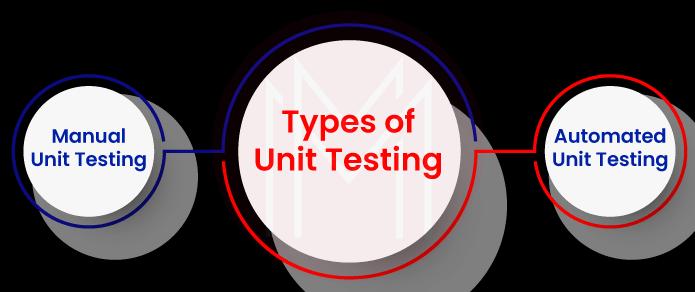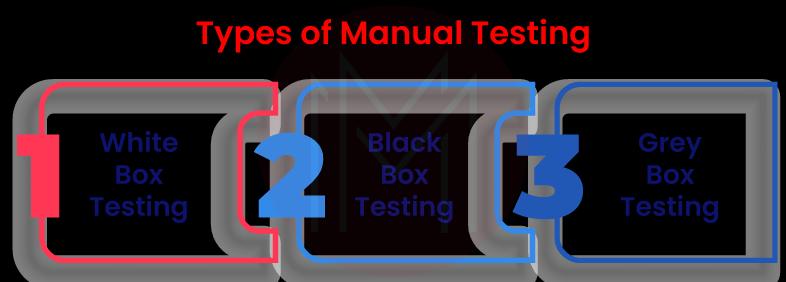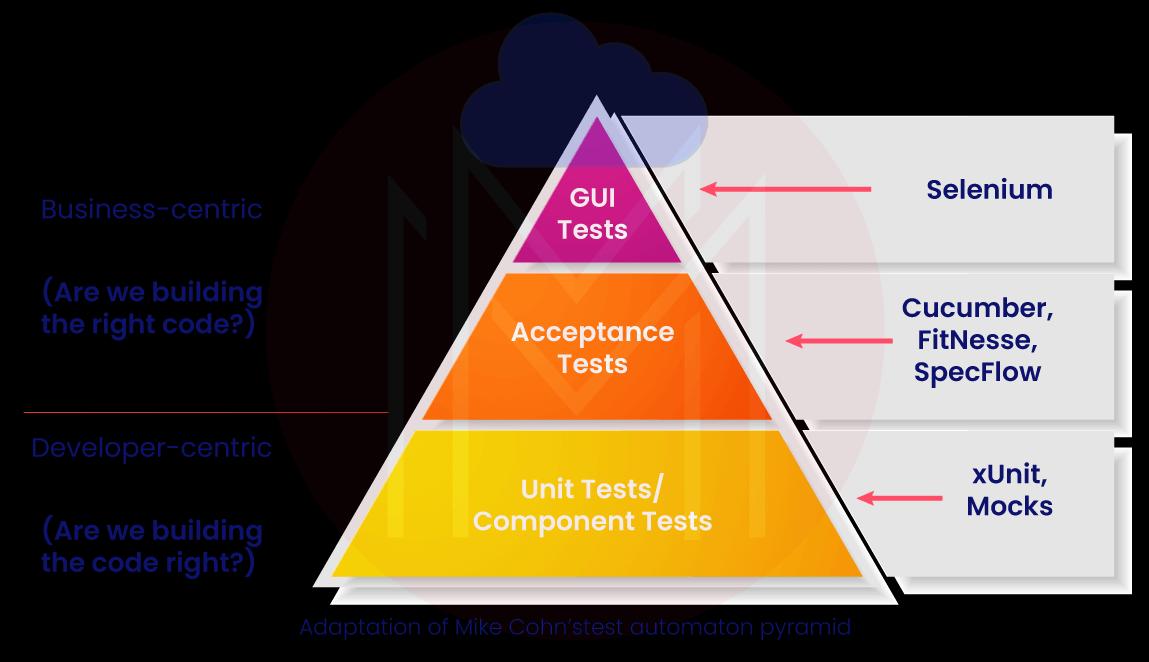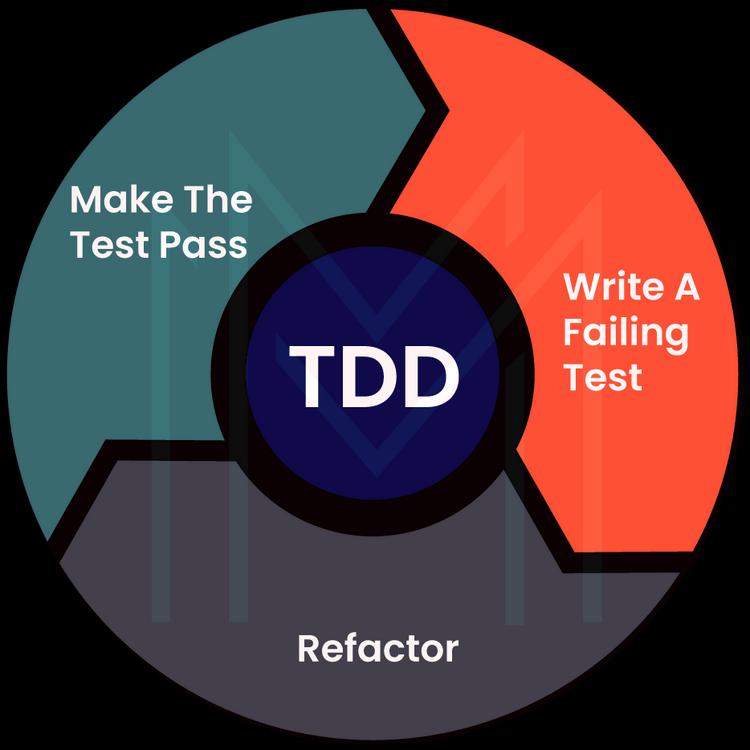- Home
- Blog
- Quality Assurance
- Types of Unit Testing

Why do we need Manual Testing?
Advantages of Manual Unit Testing
Disadvantages of Manual Unit Testing
How should Manual Testing be done?
Methodologies for Automated Testing
Advantages of Automation Testing
Disadvantages of Automation Testing
Why is it necessary to do Automated Testing?
Manual Testing vs Automated Testing
When it comes to testing, unit testing is the first and oldest method that was developed with a specific focus on the code itself. The software teams gain a lot from this method, including finding and correcting bugs in the code early on, saving time and money later in the software development life cycle. Therefore, companies must engage in unit testing to guarantee that their software is free of bugs and high quality from the software development life cycle (SDLC).
Unit tests are basic and carried out near an application's source code. They include software testing each class, component, or module utilized by your software's distinct methods and functions. A continuous integration server may perform unit tests rapidly and at a very low cost.
What is Unit Testing?
In the first step in software testing, unit testing involves making sure that the product's smallest parts, or modules, work as they should. By focusing on individual modules, testers and developers can locate and fix system-wide issues early in the software development lifecycle (SDLC). There are two main types of unit tests: manual and automation. Both types are used to verify specific components of the system being tested.
Unit testing improves program efficiency by ensuring that the individual components all work as intended. It's a clean slate on which to build better tools and increase output. By breaking down large programs into smaller, more manageable pieces, unit testing can evaluate individual modules for quality. Instead of evaluating the entire software package, this technique isolates its constituent parts to ensure they all function as expected.
| Related Article: What Is Unit Testing? |
Unit testing, which precedes the execution of integration tests, is often regarded as the first stage of the software testing life cycle (STLC). Unit testing verifies the accuracy and completeness of the slightly tested section of the program that can receive input and generate output. The modules and the system are built from the integration of these parts.
Unit testing is done by a small group of software developers and involves evaluating each unit before it is added to the system. These units are tested separately to find, analyze, and fix any problems. It is done based on requirements that have been set.
| If you want to enrich your career and become a professional in QA, then visit Mindmajix - a global online training platform: "QA Training" This course will help you to achieve excellence in this domain |
Types of Unit Testing
There are two types of testing methods
- Manual unit testing
- Automated unit testing

1. Manual Testing
Manual testing is one of the most important ways to test software because it can find both obvious and hidden bugs. A defect is a difference between what was expected and what was given by the software. The programmer fixed the bugs and returned them to the tester to test again.
For any new software, manual testing is required first, followed by automated unit testing. Although this testing takes a long time and much work, it guarantees that your program is free of bugs. Understanding manual testing methods is necessary, while familiarity with automated unit testing tools is not.
Manual testing is a way of testing software in which test cases are run manually instead of with an automated tool. The tester will run all the test cases manually from the end user's point of view. It checks to see if the application works the way the requirements document says it should. Almost all software projects conclude once test cases have been prepared and executed.
| Related Article: Manual Testing Tutorial for Beginners |
Types of Manual Testing
Manual testing can be done in many ways. Each method is used based on how it has been tested. Here are some types of testing that are done manually:
- White Box Testing
- Black Box Testing
- Gray Box Testing

Why do we need Manual Testing?
When brand-new software is released to the market, it always has many issues that make life more challenging for users. To prevent problems of this kind, we need to finish one cycle of testing to ensure that the application is bug-free and reliable and that we provide the client with a product that meets their needs. When there are no errors in the software, it is much simpler for the end user to use.
Manual testing allows the test engineer to see the program from the end-viewpoint user, which improves their ability to develop practical test cases and provide timely feedback.
Advantages of Manual Testing
- The software tester assumes the role of a real user to discover usability and UI flaws.
- Simple to understand for new testers.
- It offers excellent value for the money.
- It is used to evaluate GUI designs that change dynamically.
- It guarantees that there are no flaws in the program at all.
Disadvantages of Manual Testing
- It is not possible to reuse test cases. Each new piece of software requires its own set of test cases.
- This process takes a lot of time.
- Based on their skills and experience, testers come up with test cases. There is no proof that they have done all of the functions.
- It takes a large number of people to do.
- It doesn't test everything that needs to be tested.
- Since two teams collaborate, grasping each other's motivations is often challenging, which might misdirect the process.
| Related Article: Manual Testing Interview Questions and Answers |
How should Manual Testing be done?
- At first, the tester will examine all software-related documentation to determine which parts of the program will be tested.
- Now, the tester evaluates requirement papers to cover all needs given by the client.
- Next, the test cases are constructed by the tester following the requirement specification.
- Each test case undergoes either white box testing or black box testing, executed manually.
- The testing team is responsible for informing the development team of any issues.
- The testing team then retests the program once the development team has fixed any faulty flaws.
2. Automation Testing
Automated unit testing is another approach to software testing, and it involves using specialized tools to test scripts automatically. It's the most widely-accepted strategy for improving software testing's speed, output, and breadth of tests.
The quality of your automated unit testing relies on how well your test scripts have been developed, although automated tests are significantly more robust and trustworthy than manual tests.
In this testing, the test automation engineer is responsible for developing a script or using the proper automation testing tools to put the application through its paces. While automated testing relies on pre-existing software, manual testing relies on test cases developed by a test engineer.
Test automation allows the developer to carry out repetitive duties and other relevant work. When doing tests manually, repeating the same repetitious steps may be time-consuming and laborious. We may quickly approach the test data, manage the test implementation, and compare the actual output to the predicted conclusion with the assistance of a program that automates the testing process.
In other words, we may say that the primary focus of test automation is to replace manual human effort with either a system or a device. It can be said to be the primary focus of test automation.
The automated testing procedure helps save time since it requires less time to be spent on exploratory testing and more time to be spent on maintaining the test scripts, all while improving the overall test coverage.
When we use automation testing, we get many benefits, which are listed below
- Consistency
- Reusability
- Less Human Resources
- Early Bug Detection
- Running tests anytime (24/7)
| Related Article: Top 10 Automation Testing Tools |
Methodologies for Automated Testing
The following are three strategies and approaches within automation testing that will aid the test engineer in improving the quality of the software product being tested.
- Code-Driven
- GUI Testing
- Test Automation Framework

Advantages of Automation Testing
- Automation testing is more cost-effective than manual testing since it needs some people.
- Less time is needed for testing when using automation.
- Automation testing is complete because test cases cover the application's features.
- As a result of automation, test cases may be reused across several program versions.
- By repeating test cases similarly, automation testing increases reliability by weeding out previously unseen bugs.
- By repeatedly carrying out the same process, a test may examine how the program reacts to different inputs.
- Not many people are needed; one automated testing engineer can handle the work of a team of manual testers.
Disadvantages of Automation Testing
- Professional-level testers are needed for automation testing.
- Debugging is required because if a less effective mistake is not resolved, it might have deadly consequences.
- Maintenance costs are high because high-priced equipment is needed to test licenses.
- When it comes across a failed test case, it's hard to figure out what went wrong.
- Top-notch testing tools are needed for this.
Why is it necessary to do Automated Testing?
- We needed significant investment in resources and finances to deploy the automated testing.
- Automation testing is one of the components of software testing since it results in a better product requiring significantly less time and effort.
- Some businesses continue to use manual testing to test applications because they are unaware of the automated testing process.
Manual Testing vs Automated Testing
It is necessary to differentiate between tests that are performed manually and those that are performed automatically. The following section provides a clear difference between the manual testing and the automated testing that was performed

Manual Testing
Manual testing is performed manually by browsing through an application or interacting with software and APIs using the necessary testing tools. It is quite costly since it takes someone to set up an environment and run the tests.
Additionally, manual testing is vulnerable to human error since the tester may make mistakes or skip phases in the test script.
Automated Testing
On the other hand, automated tests are carried out by a computer that runs a test script prepared in advance. These kinds of tests are far more efficient than manual ones. The difficulty level of these tests might range anywhere from verifying a single method within a class to ensuring that carrying out a series of complicated operations in the user interface always yields the same outcomes.
Continuous integration and delivery rely heavily on automated testing, an excellent method to grow your quality assurance process by adding new features to your application.
| Related Article: Automation Testing Vs Manual Testing |
Unit Testing Features
Unit Testing is a method used early in the software testing process to test each component of the program individually. It is a crucial component of computer programming and is used to assess the different pieces of the product's source code. Other features of this testing approach include the following
- Unit tests, often known as component tests, are carried out before integration tests.
- In software development, it is used as part of the test-driven approach.
- For unit testing, programmers create and execute tests to check that the code they've written adheres to specifications and performs as expected.
- Walking through the code, reviewing it, and inspecting it are all examples of unit testing techniques that might be used.
- For this type of unit testing, automated testing is a good standard. However, manual testing is also viable for this type of test.
- Focusing one's attention and testing on each unit calls for a significant amount of both time and patience.
- Find and eliminate software flaws quickly before they may create any significant problems.
- It saves the amount of time and money that would have been required to locate and solve the issue at a later, more complicated stage.
Unit Testing Techniques
Three essential testing methods are utilized in the course of the unit testing techniques, and they are
1. Functional Testing Technique
The unit Testing team tests the software's features to validate those features and ensure that the program operates as designed. It is referred to as a black box test, and it includes the steps that are listed below
- Boundary Value
- Input domain testing
- Equivalence Partitioning
- Syntax Checking
2. Structural Technique
Structural Testing, sometimes known as "white box testing," involves developing test cases with an understanding of a system's fundamental architecture and code.
Therefore, this testing is carried out by the development team using the following techniques, which need the testers to have an in-depth understanding of the code for test execution:
- Condition Testing
- Path Testing
- Branch Testing
- Statement Testing
- Expression Testing
3. Error-Based Techniques
The person who created a piece of software is in the best position to monitor any problems in the code. To work on this type of technique, error-based approaches are used.
These techniques allow the team to locate the program's faults, bugs, and other inconsistencies. Error-based techniques include the following
- Mutation Testing
- Fault Seeding
- Historical Test Data
| Related Article: Unit Testing Interview Questions |
Advantages of Unit Testing
- It provides the ability to test the software in its component pieces.
- Performs checks to ensure that the program code is high quality and correct.
- The team can carry out unit testing before the completion of the development process.
- Unit testing results in modular code, making it easier to reuse the modules.
- It makes changes easier to implement and streamlines documentation and integration.
- It helps to streamline the debugging process.
Disadvantages of Unit Testing
- You can't rely on unit testing alone to find all the bugs in your code.
- Since unit testing is concerned only with the minor parts of a program, it does not carry out integration testing.
- Since the product is not built and tested on the target platform, there may be unexpected differences.
- As a result, the unit testing team must maintain strong discipline throughout the process to ensure that the final product meets the original concept.
Test-Driven Development (TDD) and Unit Testing
TDD relies heavily on unit testing frameworks for its unit testing phase. Automated unit tests are developed with the use of a unit test framework. Although not exclusive to TDD, unit testing frameworks are crucial to the methodology. Some of TDD's benefits for unit testing are discussed below.
- Code is written after tests have been written.
- Use unit testing frameworks to your advantage.
- All application classes are put through their paces.
- Simple and fast incorporation is now feasible.

Methods for Effective Unit Testing
- If you plan to modify the implementation, you should ensure that the corresponding unit tests have been updated.
- Incorporate testing into your development process as though it were actual code. Error checking becomes exponentially more time-consuming as more code is written without testing.
- Separate cases for unit testing are essential. Unit test cases shouldn't be impacted when requirements or features are updated.
- Use descriptive, consistent names for your unit tests.
- Keep your code testing to a minimum.
- When errors are found during unit testing, they must be rectified before moving on to the next stage in the software development life cycle.
Conclusion
Unit testing is still an important component of the testing lifecycle, even if software development evolves frequently. It aids in the early discovery of errors throughout the development process. Additionally, it ensures that no new "good" code is added to existing "bad" code-containing units. That's why learning about unit testing and working it into your software development process is necessary.
 On-Job Support Service
On-Job Support Service
Online Work Support for your on-job roles.

Our work-support plans provide precise options as per your project tasks. Whether you are a newbie or an experienced professional seeking assistance in completing project tasks, we are here with the following plans to meet your custom needs:
- Pay Per Hour
- Pay Per Week
- Monthly
| Name | Dates | |
|---|---|---|
| QA Training | Nov 29 to Dec 14 | View Details |
| QA Training | Dec 02 to Dec 17 | View Details |
| QA Training | Dec 06 to Dec 21 | View Details |
| QA Training | Dec 09 to Dec 24 | View Details |

Madhuri is a Senior Content Creator at MindMajix. She has written about a range of different topics on various technologies, which include, Splunk, Tensorflow, Selenium, and CEH. She spends most of her time researching on technology, and startups. Connect with her via LinkedIn and Twitter .















